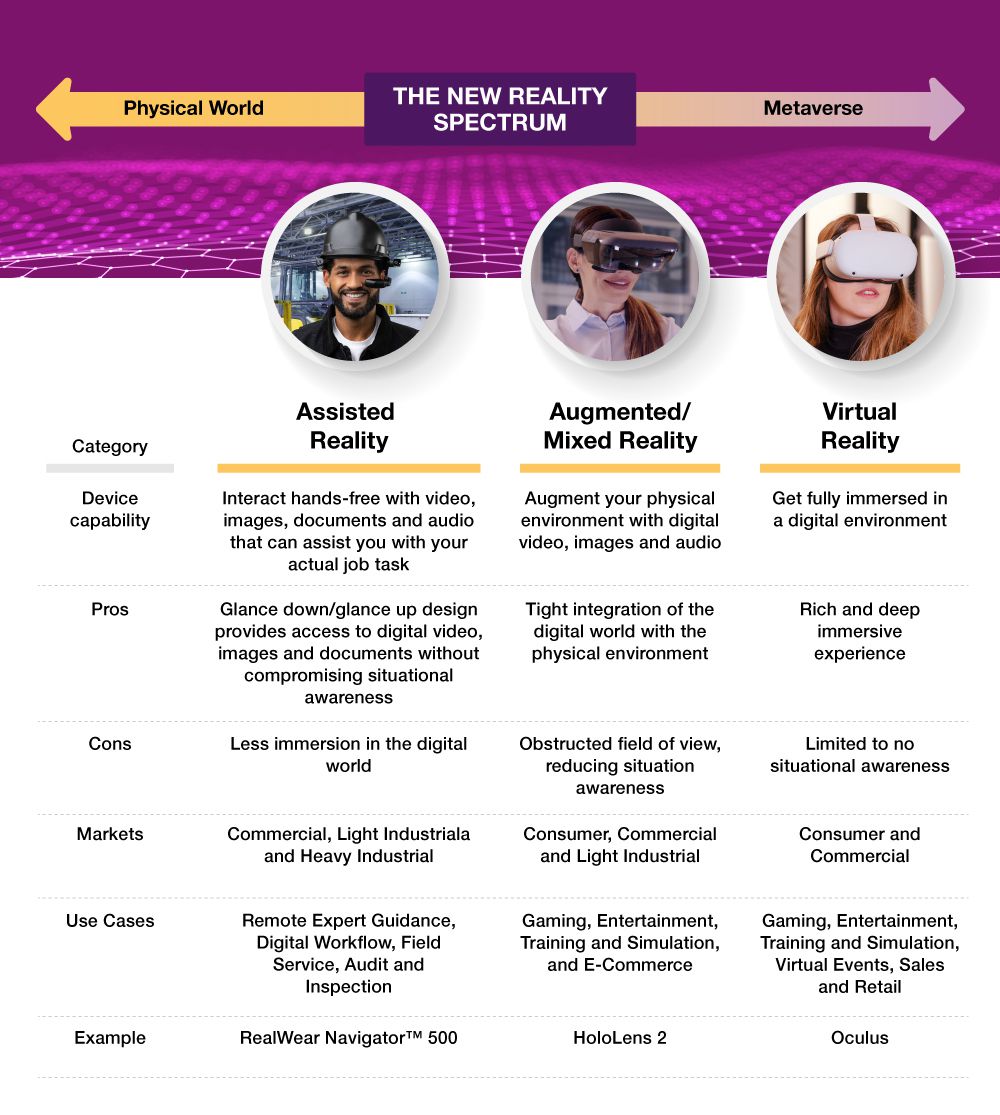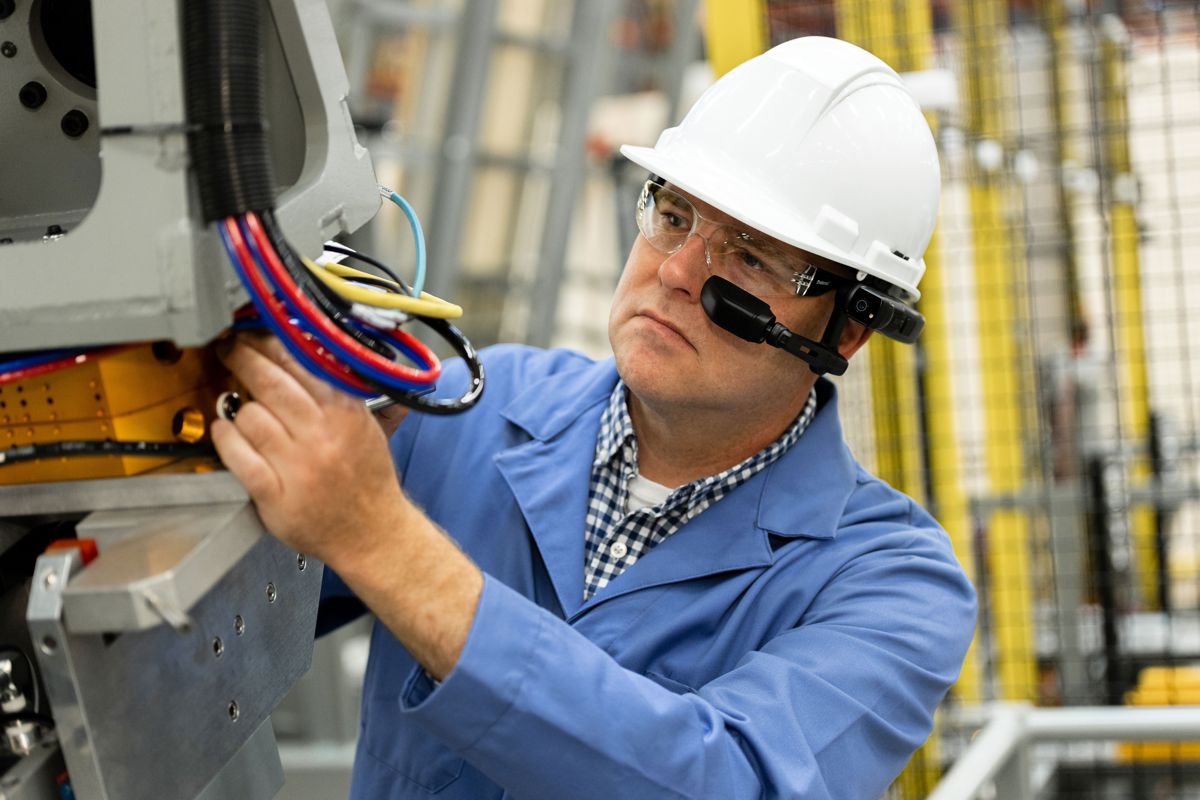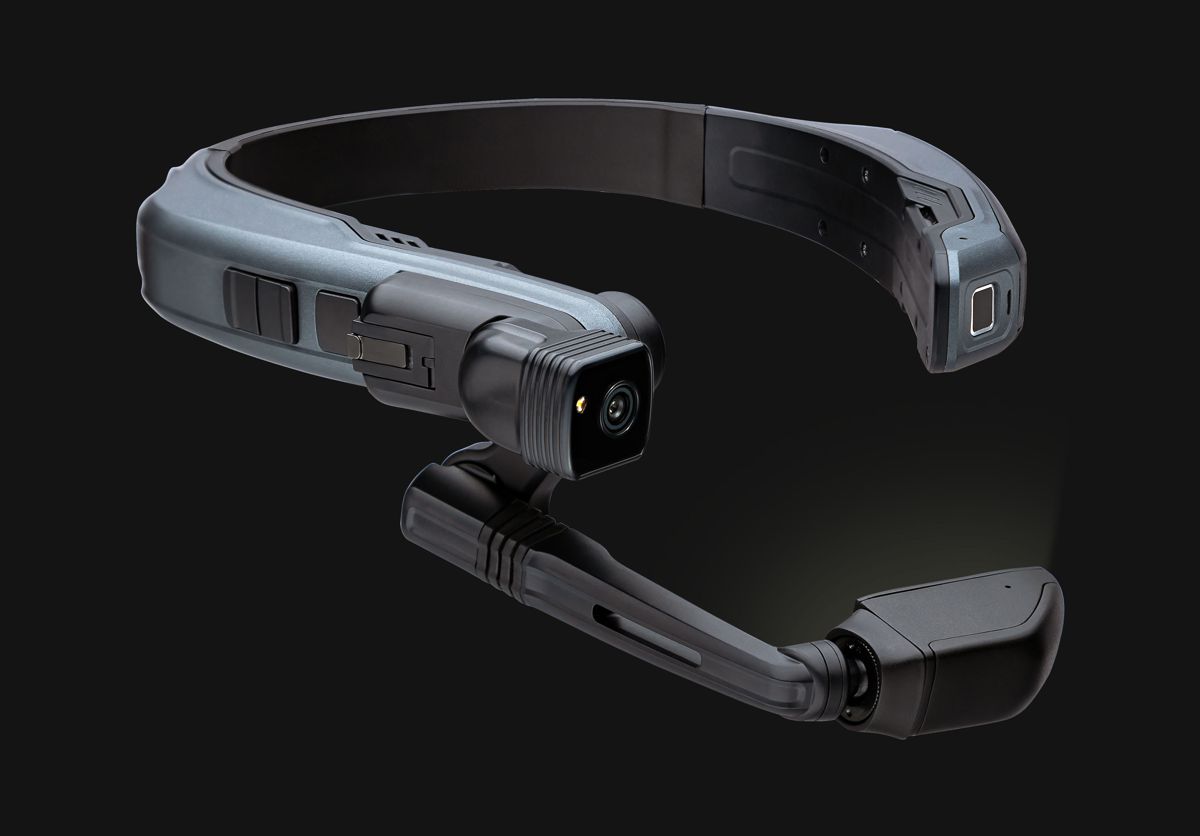RealWear announces Navigator 500 Assisted-Reality Wearable for Frontline Workers
RealWear, the leading provider of assisted reality solutions for frontline industrial workers, today unveiled RealWear Navigator™ 500, the next generation of the company’s industrial-strength wearables.
Building on the global success of its flagship RealWear HMT-1™ head-mounted display, RealWear Navigator 500 represents a new family of assisted reality products for RealWear, with a new modular platform, improved user experience, and comfortable ergonomics that empower frontline workers to perform work tasks while keeping these workers’ hands and fields of view free to more safely perform tasks for longer amounts of time in the “new way to work” hybrid work environment.
Fully optimized for hands-free use, RealWear Navigator 500 is an innovative platform solution that combines hardware, software, and cloud-ready services with a rugged design that is one-third lighter and slimmer than the previous generation, making it easier for frontline workers to wear the device for their entire shift. The hardware is designed as a modular platform with an upgradeable 48 megapixel (MP) camera system, a truly hot-swappable battery, with Wi-Fi, and an optional 4G (and soon-to-be-available 5G) modem. The voice-controlled user interface includes unique noise-cancelation technology designed for high-noise environments. RealWear has more than 200 optimized partner apps supporting a variety of use cases, such as remote collaboration, guided workflow and IoT and AI data visualization.
Assisted reality is a non-immersive experience and has become the preferred Extended Reality (XR) solution for frontline industrial workers, especially where high situational awareness is necessary. Assisted reality experiences are closer to the physical world, compared to virtual reality (VR) and augmented reality (AR) experiences that immerse workers in the metaverse.
With RealWear Navigator 500, RealWear has again raised the bar for how assisted reality and other XR technologies are deployed at the world’s leading industrial companies. Automotive, logistics, manufacturing, food & beverage and energy companies, among others, can use RealWear Navigator 500 to deliver real-time access to online information and expertise to the world’s more than 100 million industrial frontline workers.
“With pandemic concerns continuing to press upon the global economy, how technology is enabling a ‘new way to work’ is very much in focus, particularly for industrial frontline workers,” said Andrew Chrostowski, Chairman and CEO of RealWear. “Today we’re unveiling something far bigger than a product. The RealWear Navigator 500 delivers the next generation of work with a ‘reality-first, digital-second’ enterprise solution for remote collaboration, operational efficiency, and hybrid work in safety-critical industries. Assisted reality – more so than augmented or virtual reality – is designed specifically for the frontline worker who requires both hands for the job, striking the perfect balance of keeping workers 100% present and self-aware with the ability to safely navigate industrial surroundings. After all, nobody wants to be near hazardous equipment with their head stuck into the metaverse.”

A Modular, Lighter Design, with an Enhanced Camera and Vibrant Display
RealWear Navigator 500’s innovative new features and capabilities reflects feedback from thousands of customers that currently use RealWear’s assisted reality wearables on the shop floor, at construction sites, in manufacturing facilities, and in other dangerous environments. These innovative new features and capabilities include:
- A patented, revolutionary modular platform that enables customers to swap out specific modules such as the camera, modem, battery, and others in the future;
- The industry’s only truly hot-swappable, full-shift battery, which enables workers to complete longer tasks over multiple hours without losing any work;
- A stunning camera system, complete with a 48 MP sensor; the ability to capture high quality photos in extremely low-light; with an enhanced zoom in telephoto mode that allows workers to capture greater than 4X zoom while still maintaining full-HD (1080p) quality. Additionally, the camera includes advanced auto-focus and strong video stabilization;
- A clear, vibrant, adjustable display;
- A light, sleek form factor that can withstand a two-meter drop-test without compromising the RealWear HMT-1’s IP66 ruggedness rating;
- Secure seamless device sign-on options and centralized enterprise deployment and management capabilities, and
- Best-in-class noise-cancelling technology, with reliable local voice recognition in environments up to 100 decibels (dBA).

Accelerating Industrial Companies’ Adoption of a New Way to Work in a Post-Pandemic World
Once-in-a-lifetime shifts in the way employees work and collaborate have been accelerated by the global pandemic. This is leading industrial companies to find creative ways to empower and engage their frontline industrial workers, especially with limited onsite support. The result has been a surge in demand for industrial-strength, hands-free, assisted reality wearables.
“RealWear has been a key enabler to our digital transformation success and has been a key partner to help transform our certification and consultancy service delivery,” said Dan Purtell, a group innovation director at British Standard Institute, and a RealWear customer. “RealWear’s technology allowed us to efficiently scale our subject matter experts globally while decreasing our carbon footprint. We’ve now delivered over 200,000 remote audit days, eliminating onsite travel to many client locations that had been previously inaccessible. With RealWear Navigator 500, RealWear has doubled down on what we value in the HMT-1. Adding a modular design, hot-swappable battery and improved camera will expand our use cases and unlock even more value for our clients.”
Use cases for RealWear have varied widely, with an early focus on the need for remote collaboration. Recently, the solution has been broadened to use cases that include guided workflow, document navigation, digital workflow, and, most recently, AI-enabled IoT data visualization.
“While much focus has been placed on the shift to remote work for office workers, there is an increasing awareness of the unique industrial use-cases that are shifting expectations about remote field service and support, especially in difficult, loud, and dangerous environments where consumer-grade technology solutions won’t cut it,” said Tom Mainelli, industry analyst for IDC. “In the plant environment or the field, traditional laptop, tablet or mobile devices are not the solution. Ruggedized wearables can now provide real-time, assisted-reality access to information, like the heads-up display in a jet pilot’s helmet, while assuring frontline industrial workers get the full field of vision and free hands required to safely do the work. Importantly, this is not simply new features and capabilities – what RealWear is deploying is an assisted-reality form factor that is part of a generational shift in how industrial companies will service and support their operations in the field and on the factory floor.”
Unmatched Collaboration with Industry-Leading Solutions
A centerpiece of RealWear’s assisted reality category leadership has been its ability to deliver ‘See what I see’ experiences, showing that the unique form-factor benefits both companies and the frontline worker. Notable optimized remote collaboration apps for RealWear include Webex Expert on Demand, Zoom, TeamViewer Frontline, Librestream Onsight Connect, AMA XpertEye, oculavis SHARE and Microsoft Teams, among others.
At the onset of the pandemic, RealWear and Microsoft announced that Teams on RealWear devices are fully optimized for hands-free Teams calls. From October 2020 to October 2021, Teams on RealWear adoption grew by 251%, more than tripling the number of Teams users on the device, serving as a major contributor to RealWear’s reported triple year-over-year growth.
With RealWear Navigator 500, adoption of Teams will be significantly accelerated. With a more powerful Qualcomm Snapdragon processor, lighter weight, and hot-swappable battery, remote collaboration will be more seamless and a preferred way of communicating. Additionally, with the new low light enhanced camera and potential for future camera modules, frontline workers will be able to capture better POV shots to share and collaborate in new ways.
“Microsoft Teams for frontline workers has grown tremendously thanks to partners like RealWear, and we expect RealWear Navigator 500 to take our success to new levels to accelerate hybrid work,” said Kristina Behr, Vice President of Product, Microsoft 365 Frontline Worker and Industry. “With RealWear Navigator 500, RealWear allows industrial frontline workers using Teams to quickly collaborate with remote experts to safely solve complex issues while keeping their hands free and maintaining full situational awareness.”

Worldwide Support and Availability
RealWear has a worldwide distribution, support, and reseller ecosystem that will service and support the RealWear Navigator 500 solution with rapid response support, a global experience center in Dubai, and offices in major industrial markets worldwide. Customers can access RealWear offerings through a growing ecosystem of resellers and partners, including Microsoft, Autodesk and Lenovo.
The list price for Archer is $2,500 USD with a 3-year warranty. Customers can order RealWear Navigator 500 today, with shipments of the solution expected before the end of the year.



















